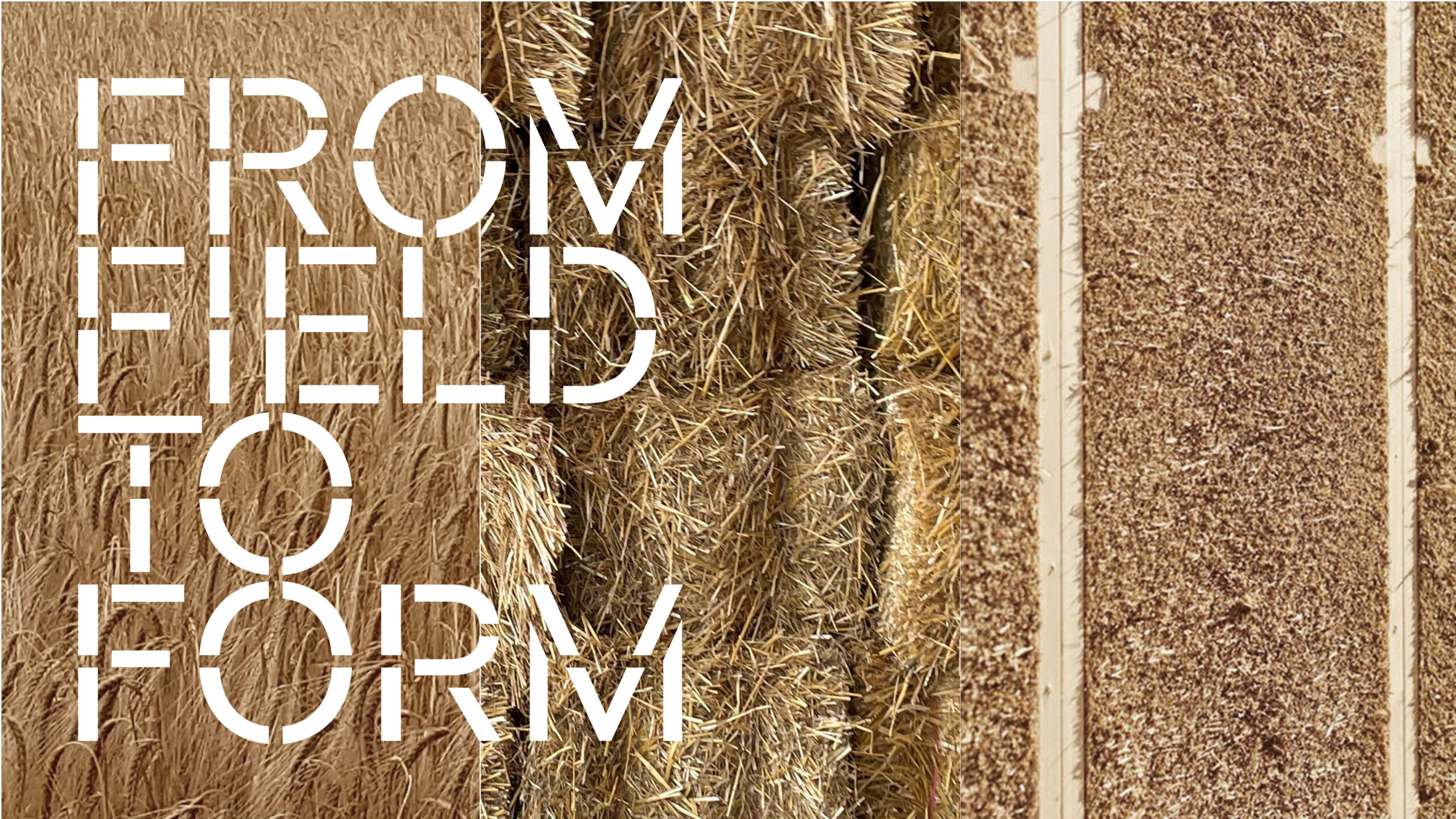From Field to Form: Straw
A group of experts discuss the use of straw as a building material.
April 29, 2024
6:30 p.m.
From Field to Form is a series of events exploring the possibilities, life cycles, and architectural implications of plant and earth-based materials.
Straw is an agricultural by-product from the harvest of grains, and it sequesters carbon as it grows in the stalk and the soil. Using straw for building utilizes waste from food production, which otherwise may be burned and release carbon into the atmosphere.
Straw has been used as a building material for over a century in the U.S., revived in the 1980s, and has been included in the International Residential Code since 2015. Its benefits are numerous. As a wall system with clay and lime plasters, it effectively manages moisture in walls and is naturally fire resistant, avoiding the need for toxic flame retardant chemicals. It contains no petrochemicals, is energy efficient, and the material is relatively inexpensive.
What will it take to accelerate the use of straw for buildings? Can we address our housing crisis with straw? How can we accelerate the adoption of straw for urban building fabric? What are the unique opportunities for designing with straw?
Organized in partnership with Healthy Materials Lab at Parsons School of Design, From Field to Form: Straw will explore these questions with a panel of experts.
Panelists
Alex English is a farmer and small business owner. He works with the Kenyon family at Nitty Gritty Grains, a family-owned and operated farm that produces certified organic grains in the Champlain Valley of Vermont. Nitty Gritty Grain Co. manages 600 acres of cropland growing certified organic wheat, corn, mixed legumes, and hay, and producing flour, cornmeal, wheat berries, cornbread mix, straw, hay, and more.
Paul Lewis is a principal at LTL Architects based in New York City and professor at Princeton University School of Architecture. Currently focused on the architectural potentials of plant and earth-based materials, LTL Architects published the Manual of Biogenic House Sections in 2022. Most recently, the studio has been testing means to compress and bind straw into a building material that simultaneously achieves insulative and structural capacities. Exhibitions featuring work in Biogenic House Sections and Experiments with Straw are currently traveling to universities and design centers across the United States.
Ace McArleton is the co-CEO and director of vision and strategy at New Frameworks and Jacob Deva Racusin is the director of building science and sustainability at the Vermont-based, multi-racial, women-, queer- and trans-owned worker cooperative. New Frameworks offers design/build services that blend natural materials and methods with high-performance design of products such as straw-based panels and modular small homes, focusing on climate regeneration and social justice.
The discussion will be moderated by Jonsara Ruth, co-founder and design director of Healthy Materials Lab (HML) at Parsons School of Design, where she is an associate professor and the founding director of the MFA Interior Design program. Ruth is a principal of Salty Labs, a collaborative studio experimenting with the design of interiors and furniture to create healthier environments.
Support
This program is supported, in part, by public funds from the New York State Council on the Arts with the support of the Office of the Governor and the New York State Legislature.
The event is co-presented with the Healthy Materials Lab at Parsons School of Design.



